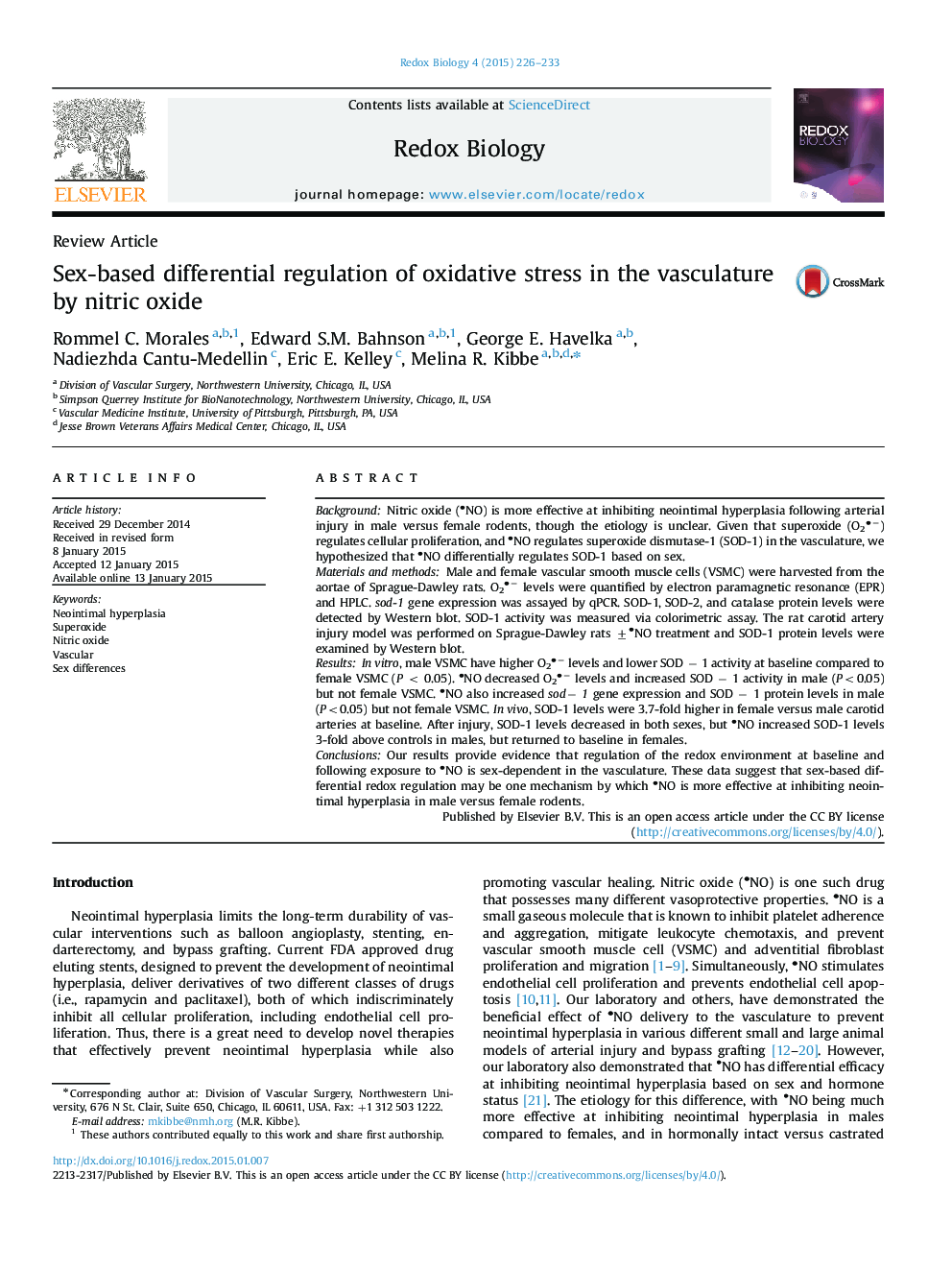| کد مقاله | کد نشریه | سال انتشار | مقاله انگلیسی | نسخه تمام متن |
|---|---|---|---|---|
| 1923095 | 1535846 | 2015 | 8 صفحه PDF | دانلود رایگان |
• The baseline redox environment in the vascular is sex-dependent.
• Nitric oxide differentially affects the vascular redox environment between the sexes.
• Nitric oxide decreases superoxide (O2.) levels, by increasing SOD-1 activity, sod1 gene expression and SOD-1 protein levels in male vascular smooth muscle cells, but not in females.
• Sex-based differential redox regulation may be one mechanism by which is more effective at inhibiting neointimal hyperplasia in male versus female rodents.
BackgroundNitric oxide (
• NO) is more effective at inhibiting neointimal hyperplasia following arterial injury in male versus female rodents, though the etiology is unclear. Given that superoxide (O2
• −) regulates cellular proliferation, and
• NO regulates superoxide dismutase-1 (SOD-1) in the vasculature, we hypothesized that
• NO differentially regulates SOD-1 based on sex.Materials and methodsMale and female vascular smooth muscle cells (VSMC) were harvested from the aortae of Sprague-Dawley rats. O2
• − levels were quantified by electron paramagnetic resonance (EPR) and HPLC. sod-1 gene expression was assayed by qPCR. SOD-1, SOD-2, and catalase protein levels were detected by Western blot. SOD-1 activity was measured via colorimetric assay. The rat carotid artery injury model was performed on Sprague-Dawley rats ±
• NO treatment and SOD-1 protein levels were examined by Western blot.ResultsIn vitro, male VSMC have higher O2
• − levels and lower SOD − 1 activity at baseline compared to female VSMC (P < 0.05).
• NO decreased O2
• − levels and increased SOD − 1 activity in male (P<0.05) but not female VSMC.
• NO also increased sod− 1 gene expression and SOD − 1 protein levels in male (P<0.05) but not female VSMC. In vivo, SOD-1 levels were 3.7-fold higher in female versus male carotid arteries at baseline. After injury, SOD-1 levels decreased in both sexes, but
• NO increased SOD-1 levels 3-fold above controls in males, but returned to baseline in females.ConclusionsOur results provide evidence that regulation of the redox environment at baseline and following exposure to
• NO is sex-dependent in the vasculature. These data suggest that sex-based differential redox regulation may be one mechanism by which
• NO is more effective at inhibiting neointimal hyperplasia in male versus female rodents.
Figure optionsDownload as PowerPoint slide
Journal: Redox Biology - Volume 4, April 2015, Pages 226–233
